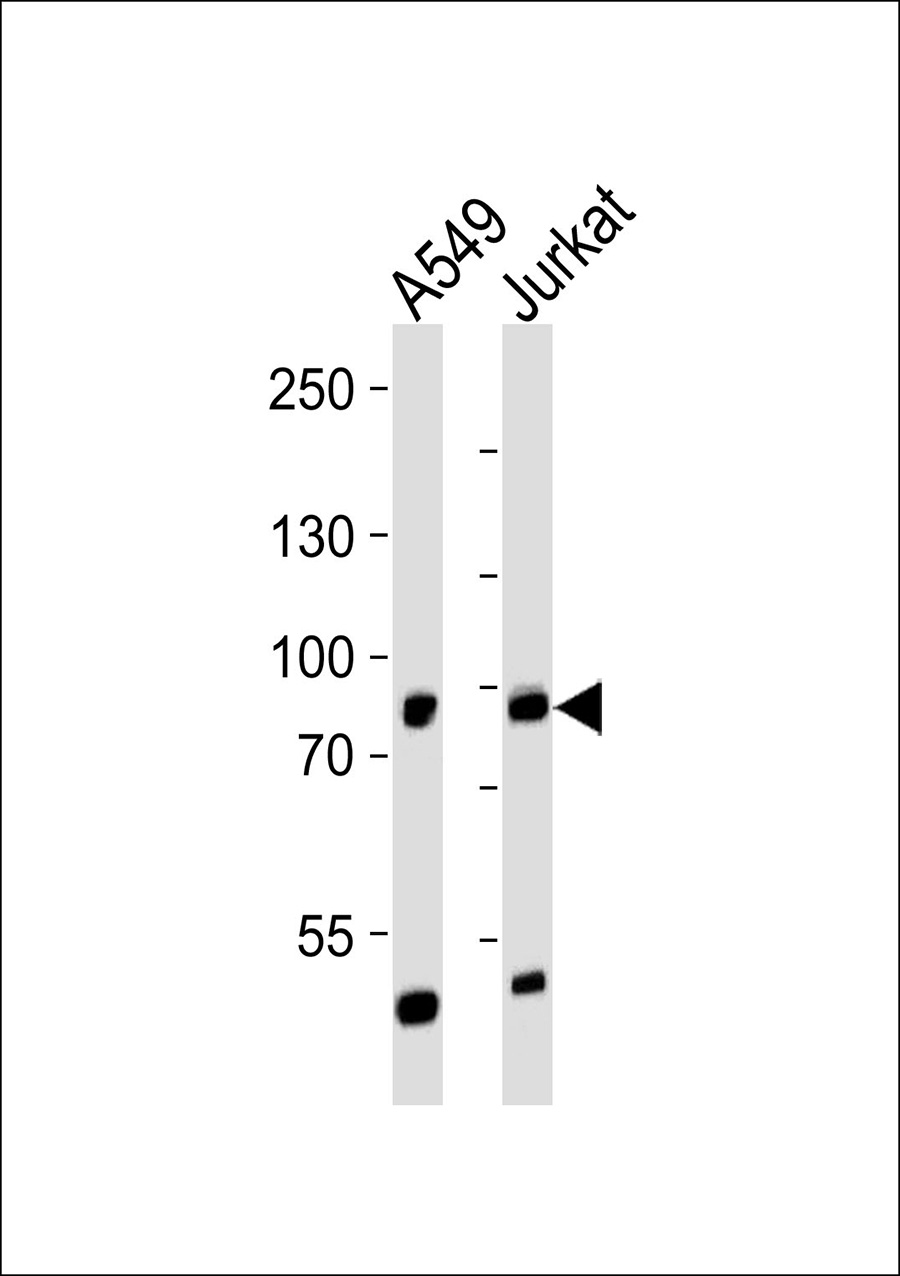PNPLA8 Antibody
Purified Rabbit Polyclonal Antibody (Pab)
- 产品详情
- 实验流程
- 背景知识
Application
| WB |
|---|---|
| Primary Accession | Q9NP80 |
| Reactivity | Human, Mouse |
| Host | Rabbit |
| Clonality | polyclonal |
| Calculated MW | 88477 Da |
| Gene ID | 50640 |
|---|---|
| Other Names | Calcium-independent phospholipase A2-gamma, Intracellular membrane-associated calcium-independent phospholipase A2 gamma, iPLA2-gamma, PNPLA-gamma, Patatin-like phospholipase domain-containing protein 8, iPLA2-2, PNPLA8, IPLA22, IPLA2G |
| Dilution | WB~~ 1:1000 |
| Format | Rabbit IgG in phosphate buffered saline (without Mg2+ and Ca2+), pH 7.4, 150mM NaCl, 0.09% (W/V) sodium azide and 50% glycerol. |
| Storage Conditions | -20℃ |
| Name | PNPLA8 (HGNC:28900) |
|---|---|
| Synonyms | IPLA22, IPLA2G |
| Function | Calcium-independent and membrane-bound phospholipase, that catalyzes the esterolytic cleavage of fatty acids from glycerophospholipids to yield free fatty acids and lysophospholipids, hence regulating membrane physical properties and the release of lipid second messengers and growth factors (PubMed:10744668, PubMed:10833412, PubMed:15695510, PubMed:15908428, PubMed:17213206, PubMed:18171998, PubMed:28442572). Hydrolyzes phosphatidylethanolamine, phosphatidylcholine and probably phosphatidylinositol with a possible preference for the former (PubMed:15695510). Also has a broad substrate specificity in terms of fatty acid moieties, hydrolyzing saturated and mono-unsaturated fatty acids at nearly equal rates from either the sn-1 or sn-2 position in diacyl phosphatidylcholine (PubMed:10744668, PubMed:10833412, PubMed:15695510, PubMed:15908428). However, has a weak activity toward polyunsaturated fatty acids at the sn-2 position, and thereby favors the production of 2-arachidonoyl lysophosphatidylcholine, a key branch point metabolite in eicosanoid signaling (PubMed:15908428). On the other hand, can produce arachidonic acid from the sn-1 position of diacyl phospholipid and from the sn-2 position of arachidonate-containing plasmalogen substrates (PubMed:15908428). Therefore, plays an important role in the mobilization of arachidonic acid in response to cellular stimuli and the generation of lipid second messengers (PubMed:15695510, PubMed:15908428). Can also hydrolyze lysophosphatidylcholine (PubMed:15695510). In the mitochondrial compartment, catalyzes the hydrolysis and release of oxidized aliphatic chains from cardiolipin and integrates mitochondrial bioenergetics and signaling. It is essential for maintaining efficient bioenergetic mitochondrial function through tailoring mitochondrial membrane lipid metabolism and composition (PubMed:28442572). |
| Cellular Location | Endoplasmic reticulum membrane {ECO:0000250|UniProtKB:Q5XTS1}; Single-pass membrane protein Mitochondrion membrane; Single-pass membrane protein. Peroxisome membrane; Single-pass membrane protein |
| Tissue Location | Expressed in parenchymal tissues including heart, skeletal muscle, placenta, brain, liver and pancreas. Also expressed in bronchial epithelial cells and kidney. Highest expression is observed in skeletal muscle and heart. |
For Research Use Only. Not For Use In Diagnostic Procedures.
Provided below are standard protocols that you may find useful for product applications.
BACKGROUND
Calcium-independent phospholipase A2, which catalyzes the hydrolysis of the sn-2 position of glycerophospholipids, PtdSer and to a lower extent PtdCho. Cleaves membrane phospholipids.
REFERENCES
Tanaka H.,et al.Biochem. Biophys. Res. Commun. 272:320-326(2000).
Mancuso D.J.,et al.J. Biol. Chem. 275:9937-9945(2000).
Bechtel S.,et al.BMC Genomics 8:399-399(2007).
Hillier L.W.,et al.Nature 424:157-164(2003).
Scherer S.W.,et al.Science 300:767-772(2003).
终于等到您。ABCEPTA(百远生物)抗体产品。
点击下方“我要评价 ”按钮提交您的反馈信息,您的反馈和评价是我们最宝贵的财富之一,
我们将在1-3个工作日内处理您的反馈信息。
如有疑问,联系:0512-88856768 tech-china@abcepta.com.























 癌症的基本特征包括细胞增殖、血管生成、迁移、凋亡逃避机制和细胞永生等。找到癌症发生过程中这些通路的关键标记物和对应的抗体用于检测至关重要。
癌症的基本特征包括细胞增殖、血管生成、迁移、凋亡逃避机制和细胞永生等。找到癌症发生过程中这些通路的关键标记物和对应的抗体用于检测至关重要。 为您推荐一个泛素化位点预测神器——泛素化分析工具,可以为您的蛋白的泛素化位点作出预测和评分。
为您推荐一个泛素化位点预测神器——泛素化分析工具,可以为您的蛋白的泛素化位点作出预测和评分。 细胞自噬受体图形绘图工具为你的蛋白的细胞受体结合位点作出预测和评分,识别结合到自噬通路中的蛋白是非常重要的,便于让我们理解自噬在正常生理、病理过程中的作用,如发育、细胞分化、神经退化性疾病、压力条件下、感染和癌症。
细胞自噬受体图形绘图工具为你的蛋白的细胞受体结合位点作出预测和评分,识别结合到自噬通路中的蛋白是非常重要的,便于让我们理解自噬在正常生理、病理过程中的作用,如发育、细胞分化、神经退化性疾病、压力条件下、感染和癌症。






